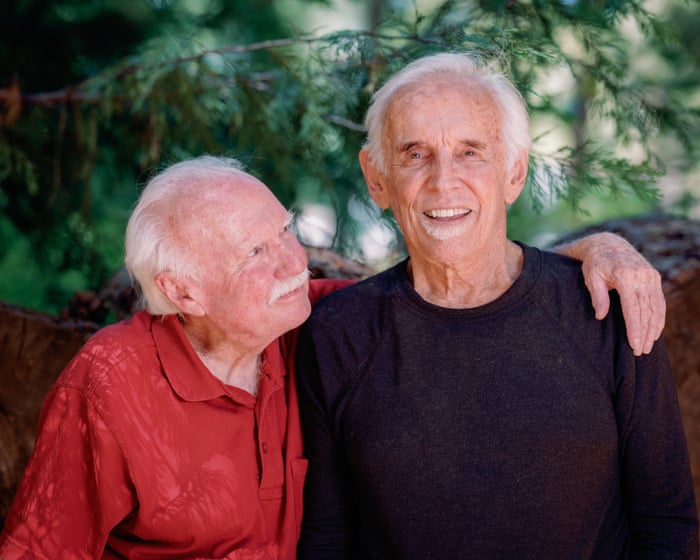“I often have the same dream: that I’m trying to get home,” says Elena Lebedeva, setting out tea and sandwiches in the tiny kitchen of her rented flat. “There’s always some checkpoint, obstacle, something in the way. I keep going—walking, running, crawling—but I never manage to reach it.”
For Lebedeva, home is Opytne, a small village with one school and no supermarkets, just outside Donetsk.
Sitting at the table in the flat her family fled to, she recounts the fates of the roughly 30 people who stayed in Opytne as Russian troops advanced. Her neighbor, known as Uncle Sasha, died in his basement, where he had been living since his house was destroyed. He may have fallen from a ladder or had a heart attack. By the time his body was found, rats had eaten his hands.
Three people sitting on a bench outside their apartment building were hit directly by a mortar shell. Neighbors gathered what remained of their bodies, but constant shelling prevented them from digging graves. They wrapped the remains in plastic bags, along with their passports, and placed them in a shed. Later, the shed was also hit directly, leaving nothing behind.
Lebedeva herself was injured in the summer of 2022 when an artillery shell landed in her backyard, and shrapnel pierced her back and buttocks. This injury may have saved her life—after being hospitalized, she couldn’t return home and, with her husband Rodion, relocated west to Kryvyi Rih. Until then, they had stubbornly remained in Opytne.
The village had been stranded between frontlines and cut off from the outside world since 2014. For eight years, residents lived without electricity, water, gas, heat, groceries, healthcare, or other essential services. The only way in or out was a mud road through a minefield. Elena and Rodion kept the village alive during that time, bringing supplies in their bright yellow minivan and caring for elderly neighbors with nowhere to go.
Across Donbas, countless families made similar choices to carry on with ordinary routines in impossible circumstances. To outsiders, the decision to stay in a war zone and continue daily life amid bombs and collapse can be hard to understand. But for many living through war, it makes sense—it’s a typical response. Even amid waves of violence, life often goes on.
The violence of war is measured in distance. Sometimes it’s millimeters, like how close shrapnel came to Lebedeva’s spinal cord. Sometimes it’s kilometers, the distance from the shifting frontline to your home. And sometimes it’s the emotional gap between those who experience the violence and those who can’t imagine it happening to them. For the past seven years, we’ve documented the stories of people living in Donbas communities for a project called Five Kilometres From the Frontline. They show us what it truly means to live with war: not just surviving explosions, but enduring its routines.A few days before deployment to the frontline, 2023.
At first, war hits you like a paralyzing shock. But as time passes, a new reality sets in. Life goes on—you still need to eat, sleep, brush your teeth, and look after your family. Bedsheets get changed, trash is taken out, potatoes are peeled, and dishes are washed and left to dry. If you still have a job, you keep working.
Oleksander Dokalenko, a water company employee, described his experience when the full-scale invasion began. He worked for the municipal water company in Avdiivka and continued reporting for duty even as shelling forced him into a basement. His short walk to work turned into a daily ordeal: “I lived only 500 meters away, but it felt like it took forever to get there. You start walking, then hear a whistle and dash for cover in the nearest building. You wait for the explosion—if it happens somewhere else, you keep going, but only until the next whistle.”
Most people think they know what war looks like from movies and news reports: tanks, soldiers, explosions, weeping women, and refugees. These images are so common they’ve lost their impact. But war isn’t always like that. Often, it appears too normal, too much like peacetime to attract the attention of journalists or filmmakers. Sometimes, only a small detail—like tape in the shape of a cross on a window or an unusual quiet in the streets—hints that something is wrong. It’s this blending of horror with everyday life that reveals the true story of war.
In Donbas communities, many people whose homes were destroyed near the frontlines still returned whenever possible. They cleaned up the remains of their houses and tended their gardens, even when it didn’t make practical sense. One woman explained, “I think we should have left this house long ago, but I don’t stop my husband from visiting. It feels like it would take away his last hope of returning to our normal life.”
For a long time, this surreal mix of ordinary life amid looming disaster persisted in villages along the frontlines. But since 2022, the war’s escalating brutality has pushed these communities to their limits. Many who held on for years are now scattered across the country.
In the small village of Polohy in central Ukraine, Olha Grinik struggles to care for her two children in a rundown, abandoned cabin without running water or electricity—the only housing they could afford after being displaced from Avdiivka and her husband, Mykola, was drafted into the armed forces. Before the war, Avdiivka was a working-class town of 25,000 people, centered around a large metal plant. After 2014, it became a frontline town, and the Griniks raised their two young children in a home just 50 meters from the trenches. Mykola worked shifts at the plant, and Olha managed the household. Before the full-scale invasion, when life was uncertain but still had its rhythm, Olha was a relaxed young woman. Today, she seems changed, her former ease replaced by the weight of her new reality.Olha Grinik (center) is pictured with her extended family at their new home in Poltava after being displaced from Avdiivka in 2024.
Miroslava Grinik reads a schoolbook in Poltava province, while Kirill Grinik (left) plays with relatives in a broken-down car parked in the yard of their new home.
Olha has lost significant weight and appears on the verge of tears when she speaks. “When Mykola comes home, the children swarm around him. But it happens so rarely,” she says. “He had 15 days of leave, but they called him back after just five. I was heartbroken. I want to be close to him, to hug him, hold his hand, and do things together.”
In her house, windows are covered with plastic sheeting instead of glass, and the children bathe in a bowl with cold water. Olha bought chunks of firewood for the stove to prepare for winter, but she’s too weak to chop them. Initially, male relatives helped with manual tasks, but eventually, they too were drafted or signed military contracts since there are no jobs in the village.
A photo shows Mykola Grinik fishing with his son Kirill and daughter Miroslava near Avdiivka in 2019.
The homes left behind by Lebedeva, Grinik, Dokalenko, and all their neighbors have been destroyed in the fighting. The devastation is so extensive that not only are houses obliterated, but the land itself is torn apart. None of the former residents can access the area. Aerial footage reveals artillery scars stretching far beyond built-up areas, scarring grasslands and leaving a pockmarked, contaminated terrain.
A destroyed bridge over the Siverskyi Donets River in Bohorodychne is shown in a 2023 image.
For Serhii Lymanskyi, a ranger who has dedicated his life to caring for this land, its destruction is a deep wound. “I know every tree, every patch of grass here,” Lymanskyi says of the chalk-steppe nature reserve he oversees. It now lies on the frontline, at the edge of the small part of Donbas still under Ukrainian control.
Serhii Lymanskyi, director of the chalk-steppe nature reserve near Lyman, Donbas, is pictured in 2023. Additional images show Lymanskyi visiting his destroyed home and military debris in the reserve, a tree damaged by shelling, and Stipa Ucrainica, a grass native to the Eurasian steppe.
The reserve, home to over 500 rare plant species that grow only in chalk soil, has been Lymanskyi’s life’s work. His son Yevhen, who grew up helping his father, became a professional ranger himself. The war disrupted everything: Yevhen was conscripted, severely wounded, and after more than 30 surgeries, it’s uncertain if he will walk again. A direct strike destroyed their family home.
The reserve has also suffered, with shell craters and trenches tearing through the chalk slopes and wiping out large areas of flora. For Lymanskyi, the loss is both ecological and deeply personal. “These days, whenever I come to Kreydova Flora, I see it shedding tears—there’s a little rain drizzling every time,” he says. “All my labor, all of nature’s work to create this beautiful place—everything is gone.”
Father Rostislav is shown trimming the verge outside St. Epiphany Church in the village of Karlivka in 2022.
The Guardian documentary “You Don’t Think It Will Happen To You,” directed by Paolina Stefani, follows Alisa and Anastasia in Ukraine’s frontline towns. Watch it here.
Frequently Asked Questions
Of course Here is a list of FAQs based on the perspective of someone who has spent significant time on the front lines in Ukraine challenging common beliefs about war
General Beginner Questions
1 Whats the main thing people get wrong about war
Most people think war is about clear battles between good and evil with a predictable front line In reality its often a chaotic grinding struggle for small patches of land filled with long periods of waiting and sudden intense terror
2 Is modern warfare as hightech as it looks in the news
While advanced technology like drones plays a huge role the reality on the ground is often a mix of hightech and WWIstyle trench warfare Basic survival muddy trenches and artillery duels are just as defining
3 What is the single most important factor for a soldiers survival
Beyond training or equipment its often sheer luck You can do everything right and still be hit by a random shell or do everything wrong and survive by chance
4 How do soldiers cope with the constant stress and fear
They develop a dark coping humor and form incredibly tight bonds with their immediate unit You rely on the person next to you for your life and that creates a unique kind of family Many also just learn to function while being permanently terrified
Deeper Advanced Questions
5 You mention people believe they understand war What do they understand through media that is inaccurate
Media often focuses on grand strategy and political narratives They miss the visceral human experience the smell the exhaustion the sound of incoming artillery and the psychological toll of seeing friends wounded or killed
6 What does the term fog of war really mean in practice
It means you often have no idea whats happening just a few hundred meters away Information is fragmented rumors spread fast and youre mostly focused on your own immediate survival and the small piece of the battle you can see
7 How has the war in Ukraine changed modern warfare
It has proven that cheap drones can destroy multimillion dollar tanks making every soldier a potential target from above It has also shown the critical importance of decentralized adaptable smallunit tactics and the overwhelming power of artillery
8 What is a common misconception about the enemy soldiers
Its easy to dehumanize them but many are just ordinary




